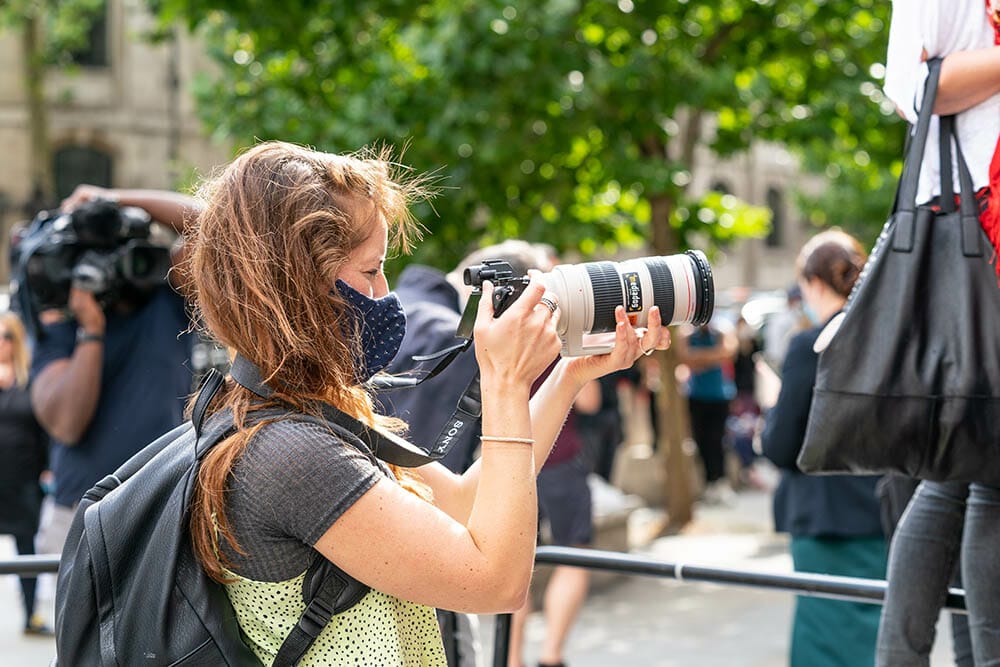Getty Images stands as one of the most renowned stock photography agencies in the world, offering a vast repository of high-quality images, videos, and music. Founded in 1995, it has become a go-to source for creative professionals, marketers, and media outlets looking for compelling imagery. With millions of images spanning an array of subjects, Getty Images provides visual content that can inspire storytelling across various platforms.
But let's face it; not everyone knows how to navigate the potentially murky waters of using stock imagery, especially when it comes to making sure you're sticking to the legal and ethical guidelines. Whether you're a business owner in need of eye-catching visuals for your website, a blogger wanting to enhance your content, or even a student putting together a presentation, understanding Getty Images is essential for anyone involved in creative work.
This guide is all about simplifying the process and helping you grasp the ins and outs of using Getty Images responsibly. You'll find practical tips and detailed explanations that will enable you to access and use this treasure trove of creativity without stepping over any legal lines.
Understanding Copyright and Licensing

When you think of images, it’s easy to assume that once you’ve seen something online, it’s fair game to use. However, this couldn’t be further from the truth, especially when it comes to stock images like those found on Getty. Understanding copyright and licensing is crucial because it ensures that creators are compensated for their work and that users can access images without fear of legal repercussions.
Copyright is a legal term that protects the rights of creators, granting them exclusive control over how their work is reproduced, distributed, and performed. When you come across an image on Getty, it’s not just a pretty picture; it’s someone’s intellectual property. To use that image legally, you’ll need to acquire the appropriate rights.
Now, let's break down the two primary types of licenses you might encounter on Getty Images:
- Royalty-Free (RF): This license allows you to pay a one-time fee to use the image with fewer restrictions, like for commercial or personal projects. However, you still can't sell the image or claim it as your own.
- Rights Managed (RM): This type of licensing is more restrictive. The cost is determined by the image's intended use, duration, and distribution. You must stick to the specified terms to avoid infringing on copyright.
To sum it up, always read the terms associated with the images you wish to use. By understanding your responsibilities as a user when accessing Getty Images, you not only stay within the legal framework but also keep the ethical considerations of content consumption in mind. By respecting creators' rights, you contribute to a vibrant and sustainable creative environment.
Also Read This: Mastering Project Presentation on Behance to Captivate Your Audience
3. Exploring Different Licensing Options on Getty Images

When you dive into the world of Getty Images, you'll quickly discover that they offer a variety of licensing options. Each one serves a unique purpose, so it’s essential to choose the one that fits your needs. Here’s a breakdown of the most common types of licenses you’ll encounter:
- Royalty-Free Licenses: This is probably the most popular option. Once you pay for the image, you can use it multiple times without incurring additional fees. However, the image can't be sold or used for promotional purposes without proper permissions.
- Rights Managed Licenses: This one is a bit more restrictive. You’ll need to specify how you intend to use the image, including details like the duration and geographic territory. Because of this, prices can vary widely based on these factors.
- Editorial Licenses: If you're looking to use images for news articles or blogs that discuss real events, editorial licenses are your go-to. Remember, these images can’t be used for commercial purposes, so keep this in mind when planning your project.
- Extended Licenses: If you require a broader usage scope with more rights, an extended license might be worth considering. This option allows for more flexibility in how you can use the image but comes at a higher cost.
Before you hit that purchase button, take a moment to assess your project and pick the license that aligns with your objectives. Trust me, it’ll save you from any potential legal headaches down the line!
Also Read This: Card Convenience: How to Add a Card in Flipkart
4. How to Properly Attribute Getty Images
Attributing Getty Images correctly is not just a good practice; it’s also a legal obligation if you’re using certain types of licenses. So, let’s break down how you can give credit where credit is due.
First and foremost, whether you’re posting on social media, a blog, or even printing in a publication, proper attribution typically includes the following elements:
- Photographer’s Name: Always include the name of the photographer as they hold the creative rights to the image.
- Image Title: If available, mention the title of the image. This provides further context for viewers and shows respect for the photographer’s work.
- Source: Clearly indicate that the image is from Getty Images. You can do this by including a hyperlink to the image or the Getty Images homepage.
Here’s an example of how you might format your attribution:
Image by Photographer’s Name from Getty Images
Lastly, remember that attribution styles can vary depending on the platform or medium you’re using. Blogging might allow for more casual formatting, while formal publications may require a stricter adherence to style guides. Just be sure to keep your attributions clear and concise to respect the rights of the creators!
Also Read This: Achieving Success on Adobe Stock
5. Alternatives to Using Getty Images
If you're exploring options beyond Getty Images for your photography needs, you're in luck! There are countless alternatives available that provide high-quality, legal, and often free images. Let's delve into some popular options:
- Stock Photo Websites: Websites like Shutterstock, Adobe Stock, and iStock offer extensive libraries of images for purchase. They cater to various styles and subjects, ensuring you find the right visual for your project.
- Royalty-Free Image Sites: Sites like Unsplash, Pexels, and Pixabay offer a vast array of images under Creative Commons licenses, allowing you to use photographs without any payment or licensing hassle. Just remember to check the specific license for each image.
- Creative Commons: Flickr and Wikimedia Commons have extensive collections of Creative Commons-licensed photos. You can use these images for free, but you must follow the attribution requirements detailed by the creator.
- Local Photographers: Sometimes, going local can work wonders! Reach out to photographers in your area for collaboration or commissions. This not only supports local artists but can also give you unique content that differentiates your work.
- Custom Photography: If budget permits, hiring a photographer for custom images tailored to your needs is an excellent investment. It ensures authenticity and exclusivity, which really shines in your projects.
Exploring these alternatives can save you money and help you find the perfect image while supporting artists and creators in various ways!
6. Conclusion and Best Practices
Using images ethically and legally is not just about compliance—it's about respecting the work of creators and maintaining your integrity as a content creator. Here are some key takeaways and best practices to keep in mind:
- Always Check Licensing: Before using any image, be sure to understand its licensing. Knowing whether it’s under Creative Commons, royalty-free, or requires specific attribution is crucial.
- Give Proper Credit: If an image comes with attribution requirements, make sure to credit the photographer or creator as specified. This builds goodwill and supports the artistic community.
- Consider Your Audience: Think about the context in which you're using images. Ensure they align with your brand and resonate with your audience, enhancing the overall message rather than distracting from it.
- Stay Current: Image licensing can change, so keep yourself updated on the latest rules and regulations regarding copyright and image use. It's always better to be informed.
- Keep Your Sources Organized: Document where you find images, along with their licenses and attribution details. This practice will save you time and headaches when you need to reference back to your sources.
In summary, navigating the world of images can be easy if you adhere to these guidelines. By respecting copyright laws and using alternative sources, you can enrich your projects without compromising your ethical standards!
 admin
admin








